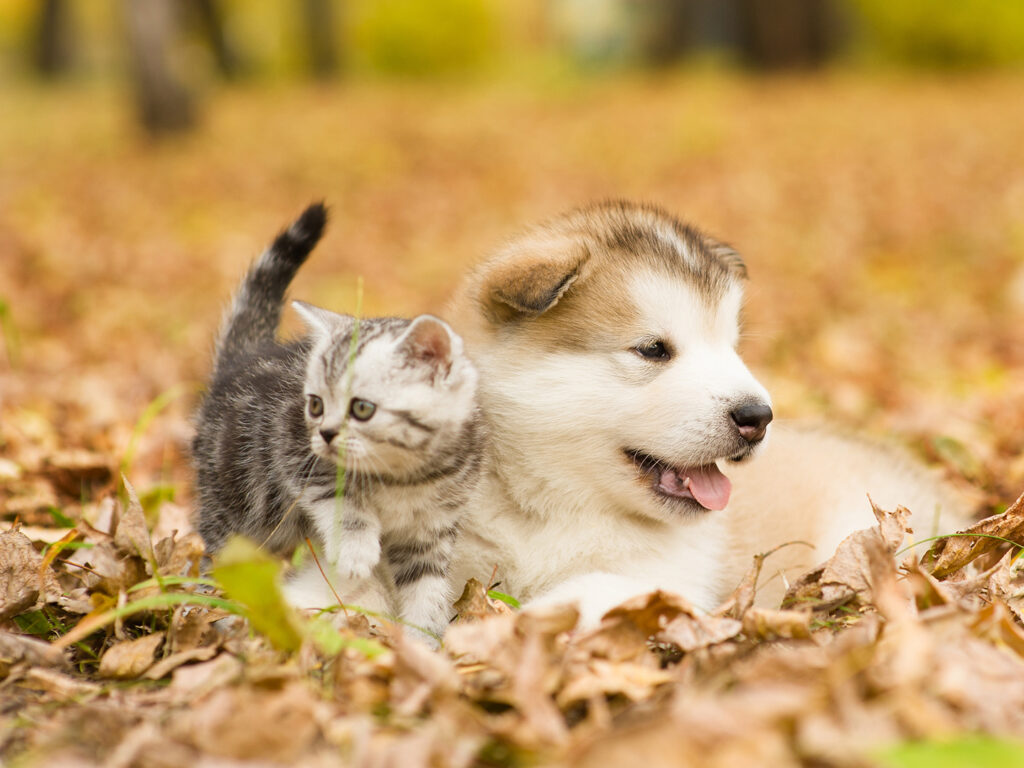Improving Animal Welfare Through Spays And Neuters

As dedicated pet owners, we do everything possible to keep our pets happy and healthy, whether it is finding the best kind of food, providing a new favorite toy, or grooming and exercising them. Another way to keep our pets in good health is by spaying or neutering them.
Dr. Brad Bennett, a clinical assistant professor at the Texas A&M School of Veterinary Medicine & Biomedical Sciences, says that in addition to stopping our pet’s ability to reproduce, these procedures also prevent diseases that are caused when the reproductive system is left intact.
The Importance Of Spays And Neuters
“We usually think about neutering male pets for population control and unwanted behaviors like spraying in cats, but it can also prevent health concerns such as tumors or testicular torsion, a painful twisting condition that cuts off blood supply and causes swelling in the testicle,” Bennett said. “On the other hand, spaying females early can decrease their likelihood of uterus infections (also known as pyometras) and mammary neoplasias, or tumors found in mammary glands.”
The health benefits of spaying and neutering can increase over time as well.
“While it is never too late to be spayed or neutered, dogs and cats can be at a higher risk for diseases the longer we wait,” Bennett explained. “For example, if a dog is spayed before their first reproductive cycle (or heat), they have less than a 0.5% chance of having a mammary neoplasia. If we spay them between their first and second heat, they have an 8% chance. If we do it between their second and third heat, they have a 26-28% chance.”
Spaying and neutering pets earlier in their life can also decrease the chance that a pet will display unwanted behaviors, which Bennett says is one of the main reasons people put pets up for adoption.
“If we can spay and neuter pets, it is likely that they won’t be surrendered to an animal shelter,” he explained.
Factoring In Age And Health Status
Most dogs and cats can be neutered around 6 months of age.
“We spay female cats and small to medium-sized female dogs typically before 6 months of age because if we can do the procedure before their first heat, they won’t show some behaviors that owners typically don’t recognize as behaviors related to heat cycles, such as irritability and aggression,” Bennett said. “If it’s a male cat or small to medium-sized male dog, we typically neuter them at 6 months so that unwanted behaviors, including aggression, urine-marking, and humping, don’t come about.”
Large and giant dog breeds, however, need to be spayed or neutered later to avoid disrupting their growth pattern, which can lead to certain conditions related to their joints and bones.
“Hormones support the continued growth of the bones of large dog breeds; if those bones are allowed to grow fully in the way they are meant to, they shouldn’t have incongruities that could cause orthopedic diseases, such as cruciate tears (when knee tissue connecting the lower leg to the upper leg tears and causes instability) or hip dysplasia (caused when the hip joint grows abnormally),” Bennett said. “In this case, we actually want to wait to spay or neuter large and giant dog breeds until after they are grown, which is between a year and 18 months of age.”
While age is the main factor for determining when a pet is spayed or neutered, there are additional factors owners should consider to ensure their pet can handle the anesthesia required for surgery.
“We want pets to be healthy and, ideally, up to date on vaccinations and heartworm prevention,” Bennett explained. “A good physical examination and certain diagnostic tests, such as routine blood work, will aid in making sure pets can process the anesthesia that they need during surgery and also that they can recover from the surgery quickly. Anesthesia typically doesn’t affect dogs or cats differently, but we will monitor them and their vitals, including blood pressure, pulse rates, and temperature.”
Owners should be sure to consult their local veterinarian or animal shelter, as there may be additional requirements that need to be met before spaying or neutering a pet.
Follow-Up Care
Once a pet has been spayed or neutered, they will require some extra attention and time to rest so that their body can heal properly.
“When a pet has surgery, moving around a lot can disrupt the healing process, so we recommend owners keep their pet calm and quiet for 10-14 days post-surgery,” Bennett said. “We also like to use E-collars, or cones, to keep pets from licking or chewing their incisions, as this could lead to infections.
“Additionally, owners should decrease the amount of food they feed their pet after surgery,” he continued. “Part of a pet’s caloric intake goes to the normal cycling of their reproductive system and when we take the system out, now, all of a sudden, they have more calories than they actually need. So one of the things that happens post-surgically is dogs and cats will gain weight, which can be very unhealthy.”
If cat or dog owners have any concerns about the process of spaying or neutering their pet, Bennett strongly encourages them to talk to their veterinarian for guidance.
Making the decision to spay or neuter your pet can be one of the most important choices you make for them. It can also be one of the easiest decisions because by doing so, you can improve your pet’s health and longevity and ensure they have a long and happy life with you.
Pet Talk is a service of the College of Veterinary Medicine & Biomedical Sciences, Texas A&M University. Stories can be viewed on the web at vetmed.tamu.edu/news/pet-talk. Suggestions for future topics may be directed to vmbs-editor@tamu.edu.


